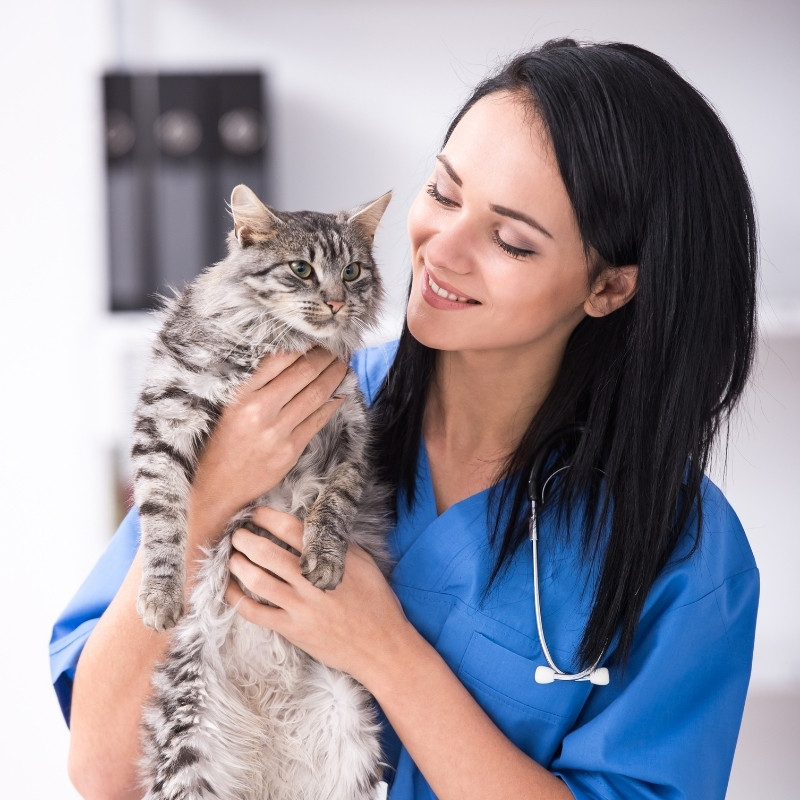Pet Radiology in Hinesburg
Radiology plays an essential role in diagnosing and treating a range of conditions in pets. At Animal Hospital of Hinesburg in Hinesburg, we offer advanced pet radiology services that help us evaluate your pet’s health accurately and efficiently. Using digital X-ray technology, we can detect issues such as hairline fractures, internal injuries, and other conditions that may not be visible through a physical exam alone. These detailed images can provide insights that guide treatment plans and promote better health outcomes.
Understanding Pet Radiology
Pet radiology involves the use of X-rays to examine various parts of a pet’s body, including bones, the gastrointestinal tract, the respiratory tract, the heart, and the genitourinary system. Radiographs, or X-ray images, are a non-invasive diagnostic tool that allows veterinarians to visualize internal structures. This helps identify the underlying causes of symptoms or rule out certain conditions. At Animal Hospital of Hinesburg, our digital radiology equipment provides high-quality images, ensuring that your pet receives an accurate and timely diagnosis.
How Pet Radiology Works
When a pet undergoes an X-ray, an X-ray beam passes through its body and captures an image on a digital film. Different tissues absorb varying amounts of X-rays, resulting in different shades of gray on the radiograph. Denser bones appear light gray, while softer tissues, such as the lungs, show up as darker shades. This contrast allows veterinarians to interpret the images and identify abnormalities such as fractures, tumors, foreign bodies, or fluid accumulation.
Conditions Diagnosed with Pet Radiology
Pet radiology in Hinesburg, is used to diagnose a wide range of conditions:
Bone and Joint Issues
Radiographs are highly effective in identifying fractures, arthritis, and other orthopedic conditions. This helps in planning appropriate treatment, whether surgical or medical.
Urinary and Reproductive Health
X-rays are used to examine the bladder, kidneys, and reproductive organs, helping to diagnose conditions like stones, tumors, or pregnancy complications.
Heart Diseases
Radiology allows veterinarians to evaluate the size and shape of the heart, which can be crucial for diagnosing conditions like heart enlargement or congestive heart failure.
Digestive Tract Issues
For pets with vomiting, diarrhea, or abdominal pain, radiology can identify blockages, tumors, or foreign objects.
Respiratory Problems
X-rays can reveal lung conditions, such as pneumonia or bronchitis, and help assess the severity of respiratory distress.
Collaboration with Veterinary Radiologists
For more complex cases, our veterinarians consult with board-certified veterinary radiologists to interpret radiographs. This collaboration ensures that even the most challenging cases are assessed with the highest level of expertise, providing you with a comprehensive understanding of your pet’s condition.
Benefits of Digital Radiology for Pets
The use of digital radiology at our facility in Hinesburg, offers several advantages:
- Faster Results: Digital images can be obtained quickly, allowing for a swift diagnosis.
- Enhanced Image Quality: Digital X-rays provide clearer images compared to traditional film, enabling more precise identification of issues.
- Easier Sharing and Consultation: Digital images can be easily shared with specialists for further consultation when needed.
- Lower Radiation Exposure: Digital radiology generally requires less radiation than conventional X-rays, making it safer for your pet.
Choosing the right facility for your pet’s radiological needs is crucial. At Animal Hospital of Hinesburg, we prioritize your pet’s health by combining advanced technology with compassionate care. Our skilled team is dedicated to providing thorough evaluations and clear communication about your pet’s diagnosis and treatment options. Book an appointment today to discuss your pet’s radiological needs. With our in-house digital radiology services, we handle a wide range of diagnostic needs to ensure your pet receives the care they deserve.
Contact us today to schedule a consultation or explore our other services to see how we can support your pet’s overall health and medical needs.

